« Sunday Inspiration from Pray the Gospels | Home | Sainthood, Service, and Suffering: Introduction »
Handel’s Messiah: A Closer Look (cont)
By Mark D. Roberts | Monday, April 23, 2007
Part 3 of series: Handel’s Messiah and Easter
Permalink for this post/ Permalink for this series
(Note: I had originally intended for this post to appear last Wednesday, but the tragedy at Virginia Tech pre-empted my plans. Today I’m finishing off my short series on Handel’s Messiah and Easter. If you’re just tuning in, you may want to start at the first of the three posts.)
In my last post in this series I began examining the libretto (words) of Handel’s Messiah, showing the Easter focus of this piece. Last time I summarized the first two parts of the composition. Here’s a quick review:
Part 1: Prophetic expectation of the Messiah; the birth of Jesus; the shepherds; the ministry of Jesus.
Part 2: The passion, death, and resurrection of Jesus. His exaltation in heaven and sending of preachers into the world. “Hallelujah, for the Lord God omnipotent reigneth.”
Today I’ll focus on the conclusion of the Messiah and some general comments.
Part III
Part III returns to the theme of resurrection, at first citing the beloved text from Job: “I know that my Redeemer liveth, and that he shall stand at the latter day upon the earth” (based on Job 19:25). (To hear a clip from this song sung by the world-renowned soprano, Dame Kiri te Kanawa, click here [.mov, 324K]. To purchase the majestic version of the Messiah in which she sings the soprano part, click here.)
From this confession that Christ the Redeemer lives, the Part III of the Messiah transitions into an extensive exposition of the final resurrection of all people, using many verses from 1 Corinthians 15. It begins by connecting the resurrection of Christ with our own future resurrection: “For now is Christ risen from the dead, the first fruits of them that sleep” (based on 1 Corinthians 15:20). From this point onward Part III includes some of the most joyful and triumphant music of the Messiah, backing up such words as:
“The trumpet shall sound, and the dead shall be raised incorruptible” (based on 1 Corinthians 15:52).
“O Death, where is they sting?” (based on 1 Corinthians 15:55).
“But thanks be to God who giveth us the victory, through our Lord Jesus Christ” (based on 1 Corinthians 15:57)
The final chorus of the Messiah is one of unabashed worship:
“Worthy is the Lamb that was slain, and hath redeemed us to God by his blood, to receive power, and riches, and wisdom, and strength, and honour, and glory, and blessing. Blessing and honour, glory and power be unto him that sitteth upon the throne, and unto the Lamb, for ever and ever.” (based on Revelation 5:12-13)
What could possibly follow this, other than 3 minutes and 22 seconds of “Amens”? (To hear a clip of the “Amen” chorus, click here (.mov 264K).
Concluding Observations
A performance of Handel’s Messiah lasts somewhere around 137 minutes, give or take five minutes depending on the pace of the conductor. The birth of Jesus (”For unto us a child is born”) comes just about 25% into the performance. The resurrection (”But thou didst not leave His soul in hell”) occurs just before the 60% point, which leaves 40% of the entire Messiah to focus on the fact and the implications of the resurrection. A substantial portion of this 40% concerns the resurrection, not of Jesus, but of those who believe in him.
I’ve often wondered if one reason we tend to ignore the post-Christmas portions of the Messiah is that a performance of the whole piece takes so long. This, in addition to the difficulty of the singing, would discourage many choirs, especially church choirs composed of volunteers with limited time on their hands. When my church choir, along with two guest choirs, performed the Messiah last month, they actually performed an abbreviated version that lasted about 75 minutes. It included all the major choruses and solos, but not some of the narrative. This was read from the libretto (or the text of the New Testament Gospels, in some places.)
Thus, from a structural point of view, the death and resurrection of Jesus are the denouement of the Messiah, with everything prior leading up to this moment, and everything afterwards following from it. In this sense Handel’s composition mirrors the history of salvation, in which the death and resurrection of Christ are the very center of time, the place in which God defeats the power of sin and death.
What I find particularly impressive about the Messiah is that it doesn’t end with the empty tomb or the resurrection appearances. In fact, these aren’t even mentioned. Rather, Handel carries the story of Easter forward to Pentecost and the preaching of the word, and even as far as the final resurrection of all people. Thus the Messiah is not an Easter Sunday composition so much as an Eastertide masterpiece. It points us to the broader and deeper implications of Christ’s resurrection, while leading us before the throne of God where we offer “blessing and honour, glory and power” to the One who sits on the throne and to the Lamb.
If you haven’t listened to Handel’s Messiah recently, I’d encourage you to do it. And as you do, celebrate the full blessing of Easter in this season of Eastertide.
Topics: Holy Week & Easter, Music |
One Response to “Handel’s Messiah: A Closer Look (cont)”
Comments
Thanks for your willingness to make a comment. Note: I do not moderate comments before they are posted, though they are automatically screened for profanities, spam, etc., and sometimes the screening program holds comments for moderation even though they're not offensive. I encourage open dialogue and serious disagreement, and am always willing to learn from my mistakes. I will not delete comments unless they are extraordinarily rude or irrelevant to the topic at hand. You do need to login in order to make a comment, because this cuts down on spam. You are free to use a nickname if you wish. Finally, I will eventually read all comments, but I don't have the time to respond to them on a consistent basis because I've got a few other demands on my time, like my "day job," my family, sleep, etc.
You must be logged in to post a comment.
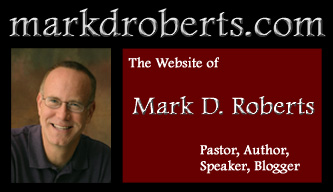

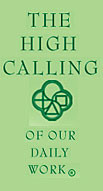

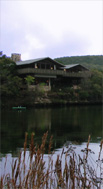
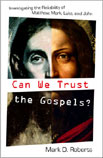


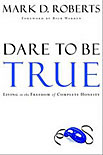

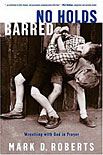
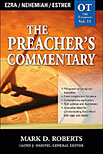
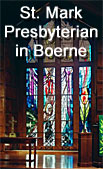

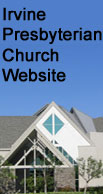
April 23rd, 2007 at 5:08 pm
Thank you, brother, for your reflections on this timeless masterpiece of Handel’s inspired by the Master Himself!
My wife and I were blessed by a kind couple in our congregation to have front row seats to The Messiah last December in Minneapolis. I had participated in a Community Chorus (composed of several of us Presbyterians, many Methodists, and Baptists) in North Carolina for several years. Fortunately, we alternated each year between the “Christmas” and “Easter” portions (unless Easter was super early as will occur next year!).
“Worthy is the Lamb” and “Amen” certainly presented the greatest challenges to us (I am a tenor), though the rewards reaped were immense. There is a power one feels when singing it, and hearing the antiphonal effects of Handel’s masterful composition, that leaves one awestruck and realizing that this is nothing less than Holy Spirit-anointed!
In the music category, just thought I should throw in this amazing commendation of a local Christian “Praise and Worship Music” Radio Station. Along with 2 or 3 other phoned-in comments by listeners, this particular woman said, “I appreciate the way you play really powerful worship songs, not JUST hymns”. As a Presbyterian Pastor for 23 years, I cringed to hear this–though I myself rejoiced to be up front with other guitar pickers playing some of the early Praise and Worship songs (many of them during the mid-70s were Scripture songs!) during my college years at Texas A&M. MOST “P&W” songs of today will be washed away as so much flotsam, while the Great Hymns will endure.